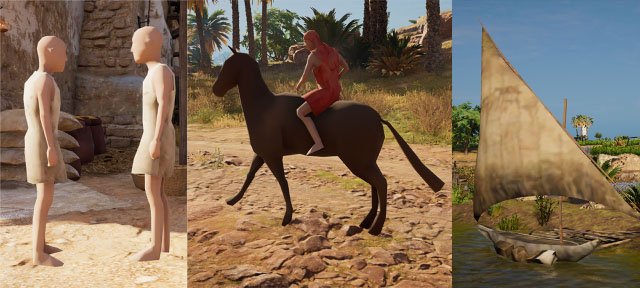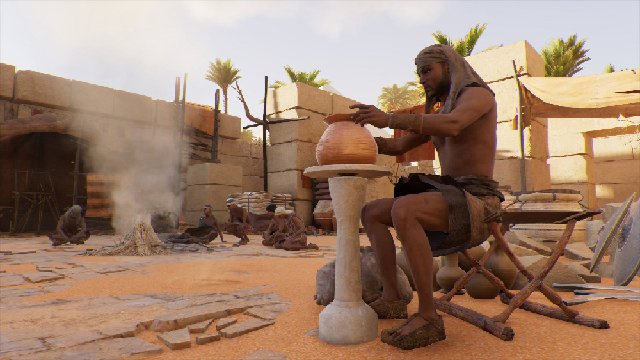Assassin’s Creed Origins is huge, atmospheric, and, most importantly, lively. After all, an open world is nothing if its filled with static, boring cardboard cutouts. Egypt’s NPCs help flesh out the entire country and, in a recent blog post, Ubisoft detailed how they made such a vibrant open world and their philosophies behind it. In order to create a universe with live characters, they each needed to have their own needs and story to tell. For example, a farmer won’t just be telling you about the work they are doing; they’ll just be doing it.
Ubisoft tried to make the many mute NPCs speak through their actions instead of words. This fits in with their “show, don’t tell” mantra for the rest of the world. According to Ubisoft, it makes the setting more believable and easier to connect to. Ubisoft achieves this nonverbal storytelling through Meta AI. Charles Lefebvre, Technical Artist at Ubisoft Montreal, describes Meta AI as a combination of three things: “a virtual tracking system that can track objects in the world, a spawning system in charge of spawning visual representation of those objects, and a behavior system that will push goals and objectives on those objects.”
These systems both ignore the player and take them into account, depending where you are. Every NPC in Assassin’s Creed Origins is active at all times and operates on a schedule. Needing to sleep, eat, work, or travel are all examples of this, which you can see when controlling Bayek’s eagle, Senu. Animals have the same schedules too. The liveliness of the world starts when their needs interact and conflict. For example, a hungry, hungry hippo might decide that a nearby guard would satiate its hunger. Or a bunch of tired guards might make a stealthy infiltration a little easier.
NPCs exist even outside of the player’s proximity, unlike in past Assassin’s Creed games. Ubisoft explains how characters exist in three states: virtual, bulk, and real.
Virtual characters are far away and essentially only exist in the matrix. Since you can’t see them, they don’t need to be visible, but their needs exist in the game and update their goals every five to 15 seconds.

As the player gets closer, characters move into the bulk state (above). The disturbing, mannequin-like models aren’t fully rendered but physically exist and update once per second. NPCs move into the real state when they get within 80 yards of the player. Here, they are fully rendered and update every frame, like any of the characters you are used to seeing as you play.
Assassin’s Creed Origins gets a lot of praise for its world, but not as much for the people that inhabit it. This AI system helps liven up the game and is a large, unspoken part that’s easy to overlook. Sometimes we need a behind-the-scenes peak like this to truly understand and respect the hard work that goes into our favorite games.







